Kitahiroshima Cho is located in the northwest of Hiroshima Prefecture and has rich nature. Kitahiroshima Cho passed an ordinance to protect its nature and implements initiatives for that purpose.
An ordinance is a rule decided by a prefecture or municipality.
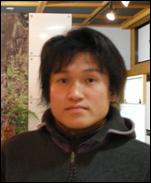 Kitahiroshima Cho “Kogen-no-Shizenkan” Comment from Mr. Katsunobu Shirakawa, curator Kitahiroshima Cho “Kogen-no-Shizenkan” Comment from Mr. Katsunobu Shirakawa, curator |
| My work is to study nature in Kitahiroshima Cho, protect it, and teach people the greatness and importance of nature. There are many rare creatures in Kitahiroshima Cho. Researchers and university students have been coming to Kitahiroshima Cho to study them. People in Kitahiroshima Cho are trying to protect the town’s nature on their own. They passed ordinances because they care a lot about nature. Human beings are a part of nature too. Taking care of plants and animals means taking care of ourselves as human beings. |
 |
| Let’s learn about initiatives to protect nature in Kitahiroshima Cho. |  |
Kogen-no-Shizenkan is a learning facility that presents nature in Kitahiroshima Cho in a comprehensible way. It was built as an initiative to protect nature in Kitahiroshima Cho.
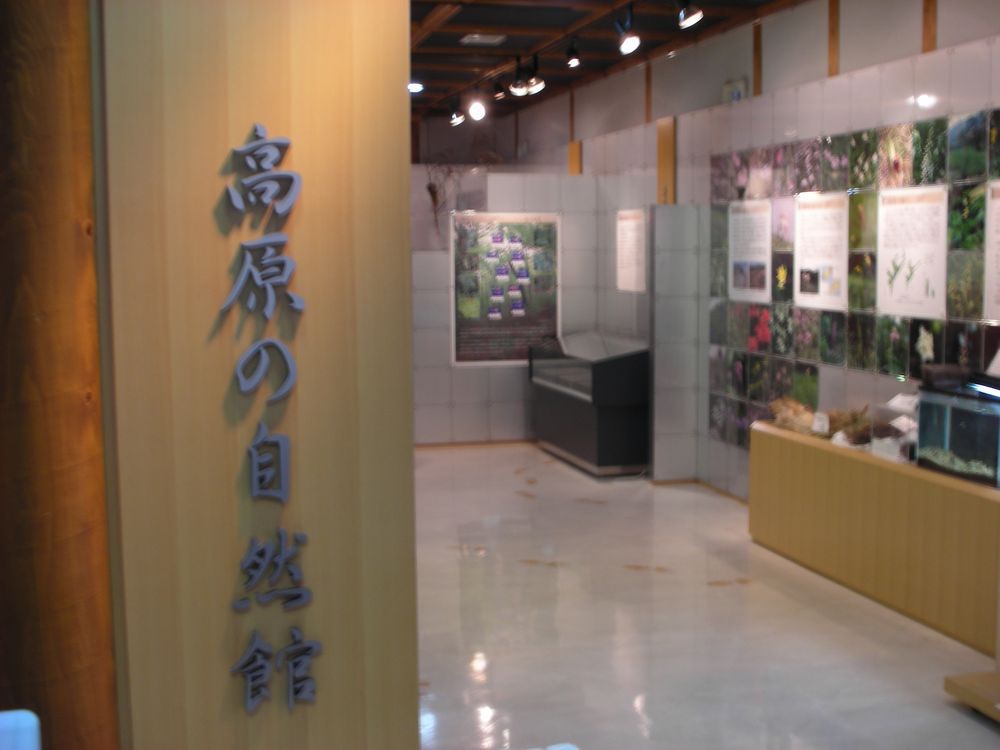 Kogen-no-Shizenkan |
Protecting marshes (Kirigatani Marsh, Yawata Highland, Kitahiroshima)
Yawata Highland used to be a lake over 10,000 years ago. Water from the lake has disappeared since, and people made paddy fields on land that was once the bottom of the lake. There are about 20 big and small marshes in Yawata Highland, which has a rainy climate.
Rare plants and animals that cannot be found elsewhere live in marshes.
| ※A marsh is grassland located in a cool, humid area. |
| Protecting marshes (Yawata Highland, Kitahiroshima Kirigatani Marsh)  |
| Why do people in Kitahiroshima protect the marshes? |  |
Climate in Yawata Region
Average temperature: 10℃
Average temperature in August: 23℃
It is as cold as Aomori Prefecture, and up to 1 m of snow can accumulate in winter.
It rains the most of anywhere in Chugoku Region.
Rare creatures in Kirigatani Marsh
| Hiroshimasanae | Insect Dragonfly |
| Silver-studded blue | Insect Butterfly |
| Scarlet dwarf | Insect Dragonfly |
| (the world’s smallest dragonfly) | about 2 cm |
| Japanese iris | Plant |
| Marsh marigold | Plant |
| Himezazenso | Plant |
| Clouded salamander | Amphibian |
 Hiroshimasanae |
 Silver-studded blue |
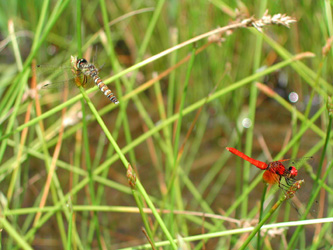 Scarlet dwarf |
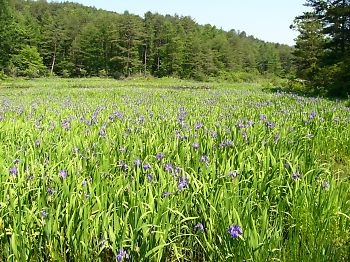 Japanese iris |
Turning marshes into pasture
Some decades ago, marshes were considered not very useful to people.
About 40 years ago, the Japanese government and towns planned to turn marshes into pasture to raise cattle and dug drains to let the water drain easily. However, pasture grasses did not grow well due to the low temperature. The marshes dried up, and plants and animals that used to live in the marshes disappeared.
Creatures in marshes are all connected, so the whole nature of Yawata Marsh was destroyed. And because marshes function as a natural dam, floods became frequent.
 Marsh being turned into pasture |
Creatures that disappeared  Latham’s snipe |
 Chestnut-eared bunting |
Returning pasture to marsh
Hiroshima Prefecture and Kitahiroshima Cho established “Yawata Marsh Nature Revival Council” in 2004 to revive marshes with the help of local people.
First, they cut big trees that do not usually grow in marshes. Then, they blocked the drains to retain water and make the land more moist. They returned the river surround by concrete to its original state and made a wooden path to observe the land and see if it returned to marsh.
With this hard work, marshes gradually returned to their original state and people began to visit the marshes to see beautiful flowers.
Creatures that returned 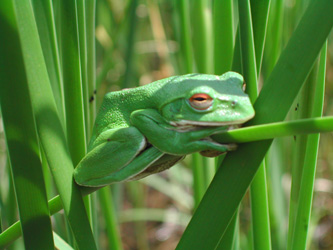 Forest green tree frog |
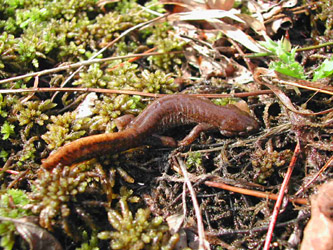 Clouded salamander |
Protecting grassland (Mount Ungetsu, Kitahiroshima Cho)  |
Grassland and creatures that disappeared
Grassland used to exist across Japan until the Meiji Period, because people used to grow pasture grasses and graze their cows, which they used for agriculture. However, the number of cows decrease as people started to use machines for agriculture. There was no more need for feed, and the grassland gradually disappeared. Grassland existed because people did controlled burns every spring to grow only grass and not trees. Once they stopped doing controlled burns, grassland across Japan turned into forest.
At the same time, creatures in grassland lost their habitat and disappeared one by one.
| Grassland used to occupy 30% of Japan’s land during the Meiji Period, but it is less than 1% today. |
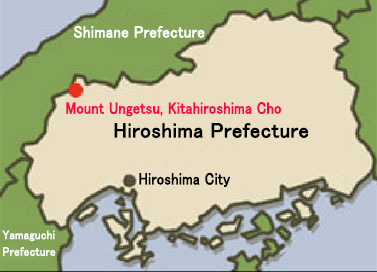 |
| Why are people in Kitahiroshima Cho trying to revive grassland? |  |
| Grassland creatures |
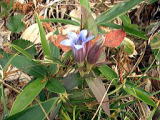 Gentian |
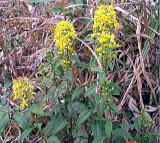 Goldenrod |
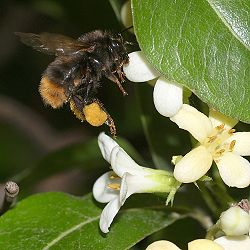 Bumblebees |
 Mountain hawks |
Restoring grassland
Responding to the call of Mr. Shirakawa of Kogen-no-Shizenkan, people in Kitahiroshima Cho and volunteers started controlled burns on Mount Ungetsu.
Controlled burns on Mount Ungetsu have been done every spring for 10 years (2005), with the cooperation of local people and volunteers from across Hiroshima Prefecture and other parts of Japan.
Children of Ungetsu Elementary School make a presentation on the controlled burn and provide help. They also perform an operetta about the importance of protecting grassland in many places.
After the controlled burn began, some farmers started to graze their cows on Mount Ungetsu. Plants such as bamboo lily and Japanese azalea have also increased. Hares and mountain hawks returned to Mount Ungetsu, and people visit to hike on weekends.
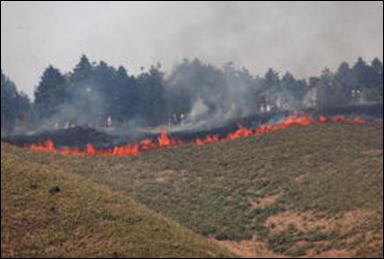 | 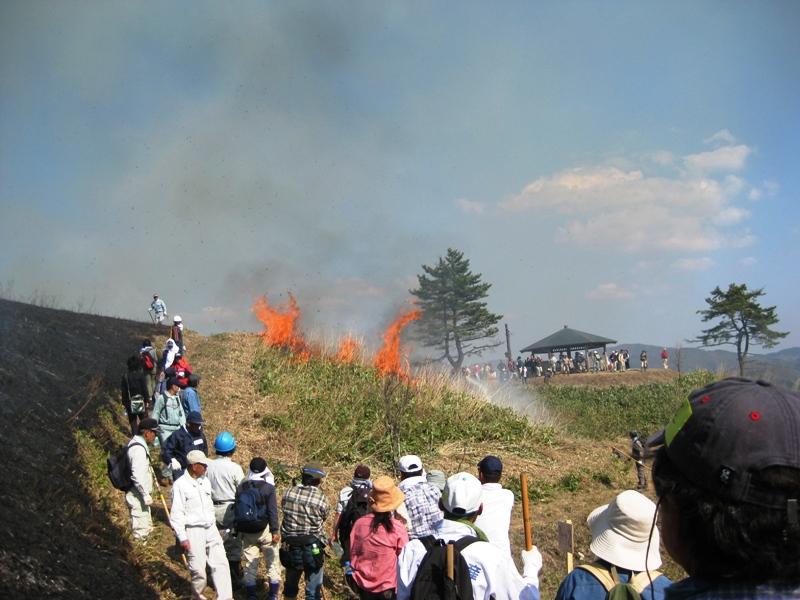 |
| Controlled burn process |
| Cut grass to make a path that prevents fire from spreading (5–10 m wide) |
| ↓ |
| Carry the grass away by hand |
| ↓ |
| Burn the mountaintop first to prevent it from spreading too quickly |
| ↓ |
| When 1/3 is burned, burn from below so that the fire can go out in the middle (Burn from the leeward side) |
| ↓ |
| People wait together with water until fire goes out |
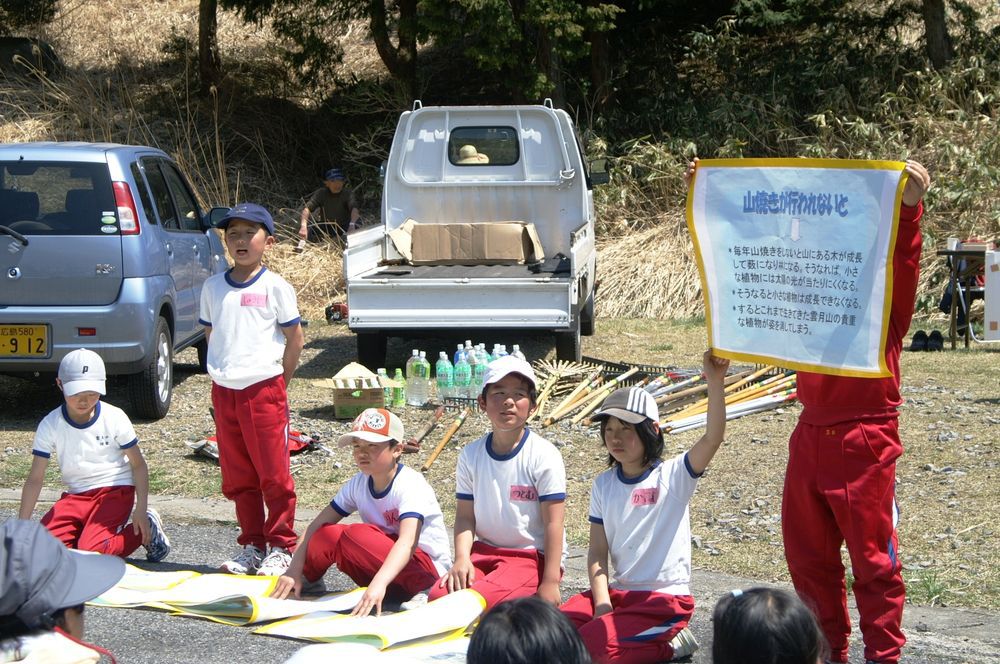 Children of Ungetsu Elementary School explaining the controlled burn |
 Operetta “Ungetsu-no-takara” |
 |
Comments from volunteers who participated in the controlled burn
“I became friends with many people and felt the importance of cooperation.”
“People of different ages participate in the controlled burn, and I learn a lot about the relationship between people and nature. I hope it will continue in the future.”
“I felt pride in our community through the presentation and operetta by Ungetsu Elementary School.”
History of nature conservation in Kitahiroshima Cho (chronology)
| Activities in Yawata Marsh | Activities on Mount Ungetsu | |||
| Year | Event | Year | Event | |
| 2002 | Survey of flora and discussion to protect the marsh begin | 2003 | Consultation to restart the controlled burn begins | |
| 2003 | Survey of flora and fauna such as salamanders, insects, birds, and plants begins | 2005 | Recruitment of controlled burn volunteers begins | |
| “Nature Restoration Council” founded | Ungetsu Elementary School starts to study the controlled burn | |||
| Survey of underground water begins | 150 volunteers cooperate to restart the controlled burn | |||
| 2004 | Experiment to revive the marsh by digging a ditch on a former farm site begins | 2006 | Elementary school students start to participate in the controlled burn | |
| 2007 | Nature revival works begin | Song about Mount Ungetsu, “I Love Uzutsuki,” is produced | ||
| 2009 | The construction and walkway are completed | Operetta, “Ungetsu-no-takara,” is produced and performed | ||
| 2010 | Survey on the effect of the construction begins | 2010 | Photography book, “Ungetsu-no-takara,” is published | |
| Many creatures are protected by the hard work of people in Kitahiroshima Cho. |  |


